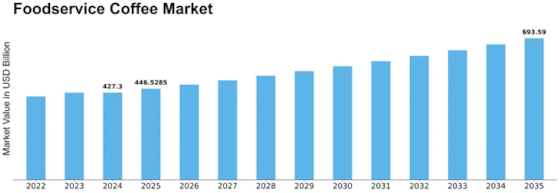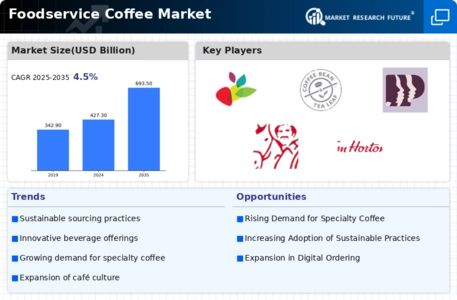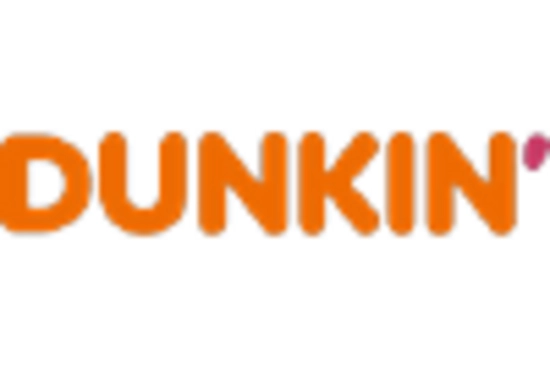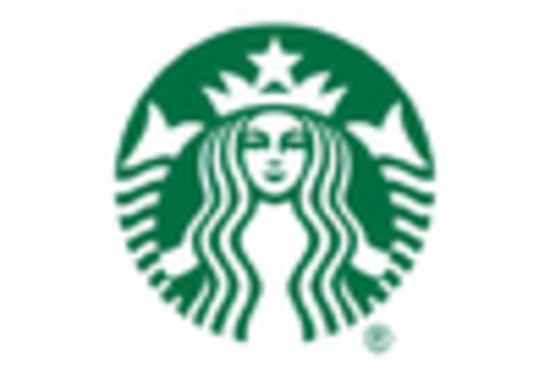Foodservice Coffee Size
Foodservice Coffee Market Growth Projections and Opportunities
The Foodservice Coffee Market is shaped by a variety of factors that contribute to its dynamics and growth in the ever-evolving food and beverage industry. One of the primary drivers of this market is the global and enduring love for coffee as a go-to beverage for millions of people. The ubiquity of coffee in various cultures and its versatile nature make it a staple in the foodservice industry, where consumers seek not only a caffeine boost but also a diverse range of coffee experiences. From specialty brews to classic espresso-based drinks, the demand for a variety of high-quality coffee options in foodservice establishments continues to rise.
Consumer preferences and trends play a significant role in shaping the Foodservice Coffee Market. The surge in interest for specialty and artisanal coffee experiences has driven establishments to expand their coffee offerings beyond traditional drip coffee. Consumers, particularly millennials and Generation Z, are seeking unique and personalized coffee experiences, influencing the menu choices and presentation styles in coffee shops, cafes, and restaurants. The demand for ethically sourced and sustainably produced coffee has also become a notable trend, prompting foodservice providers to prioritize responsible and transparent sourcing practices.
Economic factors, including disposable income and consumer spending patterns, directly impact the Foodservice Coffee Market. During periods of economic stability, consumers may be more willing to spend on premium coffee options and indulgent experiences in cafes. Conversely, economic downturns may lead to a shift towards more budget-friendly coffee choices. The market's sensitivity to economic fluctuations requires foodservice providers to adapt their offerings to meet the diverse preferences and financial considerations of their customer base.
Supply chain dynamics and logistics are critical considerations in the Foodservice Coffee Market. The availability and pricing of coffee beans, influenced by factors like weather conditions, crop yields, and global trade, impact the cost structure for foodservice providers. Efficient supply chain management is essential to ensure a consistent and reliable supply of high-quality coffee beans, contributing to the overall customer satisfaction and success of coffee-focused establishments.
Technological advancements play a significant role in shaping the Foodservice Coffee Market, particularly in the context of automated brewing systems and digital ordering platforms. Coffee establishments are increasingly incorporating technology to enhance the customer experience, improve operational efficiency, and streamline order fulfillment. From mobile ordering apps to smart coffee machines, technology has become an integral part of the modern foodservice coffee landscape, catering to the preferences of tech-savvy consumers.
Health and wellness considerations are influencing the Foodservice Coffee Market, with consumers seeking options that align with their lifestyle choices. The demand for plant-based milk alternatives, sugar-free syrups, and healthier coffee additives reflects a growing awareness of the impact of dietary choices on overall well-being. Foodservice providers are responding to these trends by offering customizable and health-conscious coffee options, accommodating a broad range of dietary preferences and restrictions.
Cultural influences and regional variations also contribute to the dynamics of the Foodservice Coffee Market. Different cultures have unique coffee traditions and preferences, influencing the types of coffee beverages offered in various regions. The rise of global coffee culture has led to a fusion of traditional and international coffee styles in foodservice establishments, providing customers with a diverse and culturally rich coffee experience.


















Leave a Comment